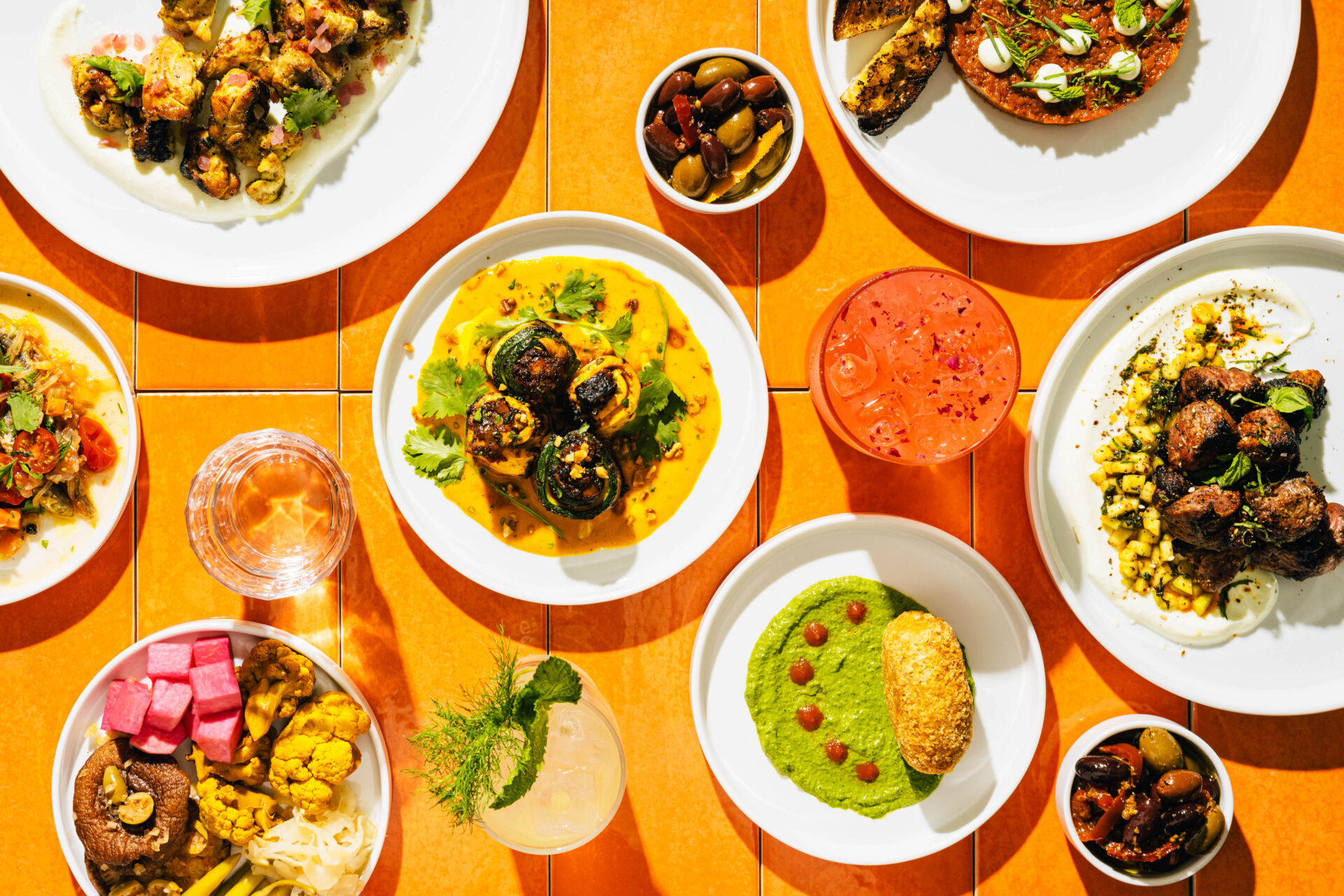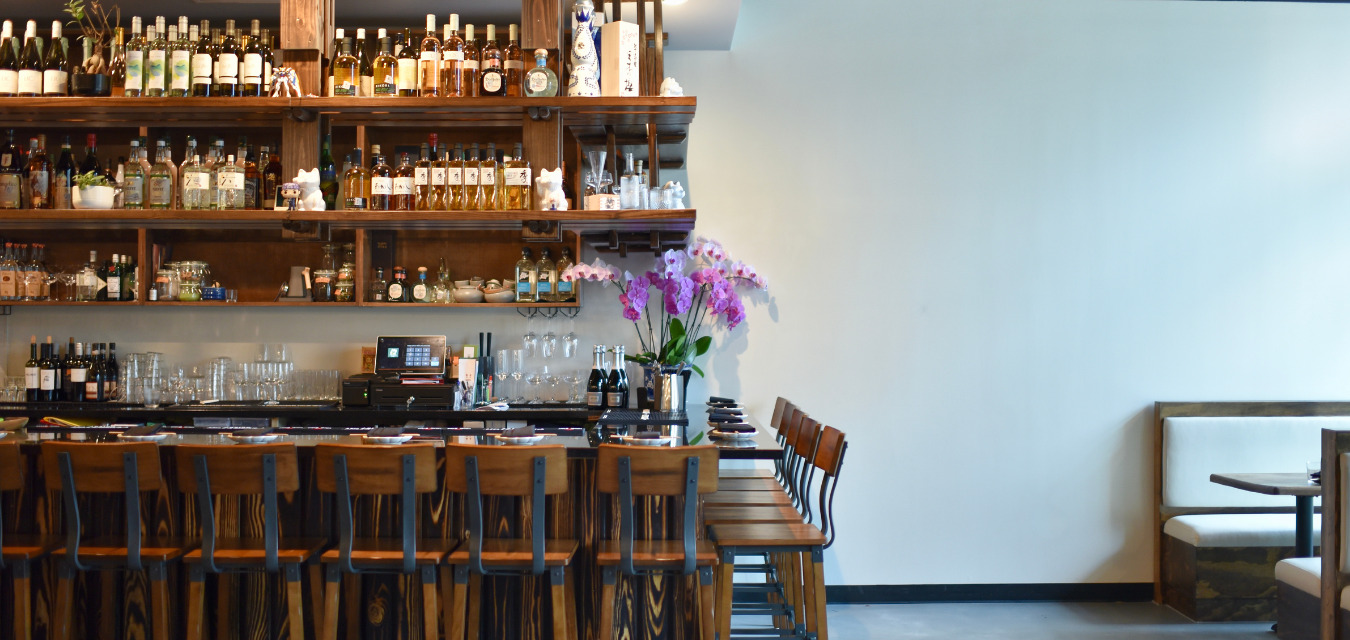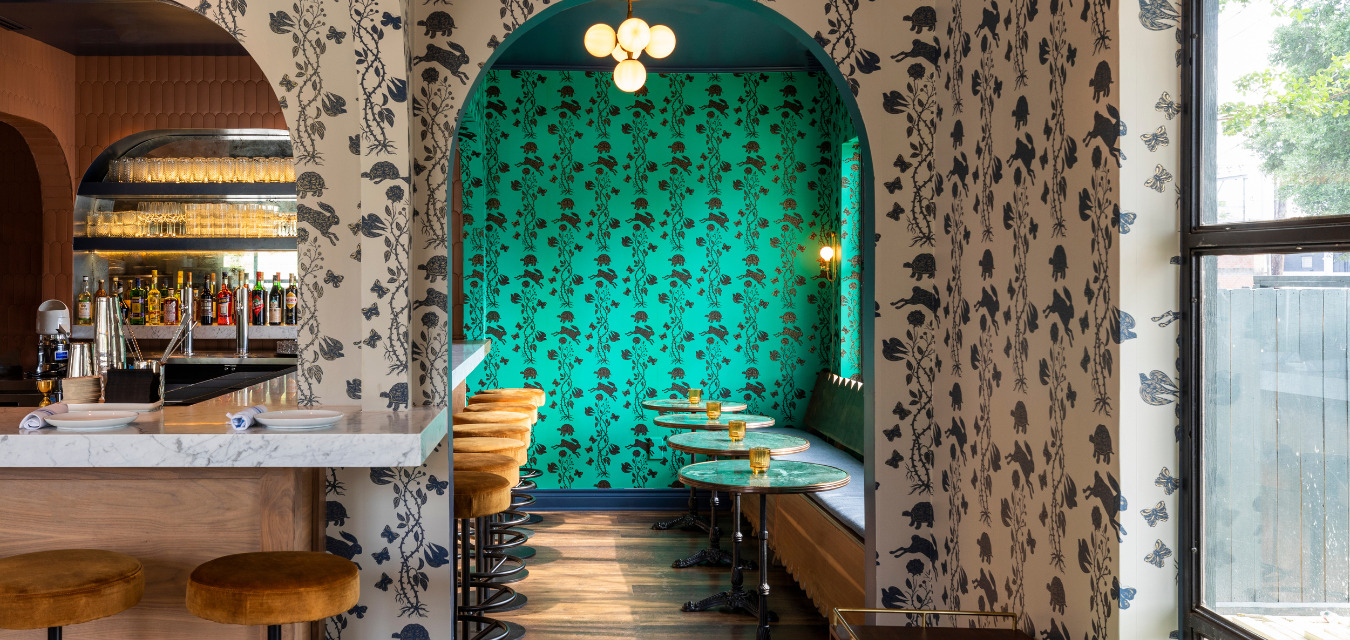The South’s secondary markets are seeing a swell of Asian restaurants, thanks to both a shifting demographic and the region’s changing palate. These are just five of the chefs who are shaping the story—and transporting diners with every plate.
How we experience food reflects how we experience the world. Most of us are unable to travel to Tokyo and sit at a noodle bar on a random weeknight or walk in the footsteps of an Indian American punk rocker from the Bronx to Raleigh. We can’t all study classical cooking in China or learn how to make kimchi from a Korean mom. The best dining experiences transport diners to another world during the course of a meal—they get to travel through the eyes of the creator, driven by curiosity about what is served on their plate.
And curiosity about Asian food is booming in the South.
Over the last 10 years, a diverse array of Asian cuisine, both innovative and traditional, has steadily permeated midsized Southern towns. While larger Southern cities such as Houston and Atlanta have had a significant Asian population (and food scene) for decades, secondary markets like Nashville, New Orleans, Austin, Raleigh, and Charlotte are only now catching up.
So why are innovative Asian and Asian-inspired restaurants making their mark on these cities right now?
It’s a perfect storm brewed from changing Southern demographics that reflect significant migration from coastal metropolises, a boom in smaller, independent restaurants with more room for originality, and a customer base primed by social media to seek out unique experiences—all accelerated by the COVID-19 pandemic.
Work-from-home allowed people from coastal cities to seek lower costs of living in Southern towns, and these bootstrappers brought a demand for the diverse cuisines they were used to being able to access in New York or California. Not only that: When travel was limited during the pandemic, people had to find other ways to expand their worldview. This demand, combined with a concentrated effort by smaller Southern cities to revitalize their downtowns, transformed these cities into hubs of culinary creativity.
Of course, there have long been Asian communities in the Southern states: Nashville houses one of the largest and fastest-growing Lao communities in the US; New Orleans has a thriving Vietnamese American community that returned and rebuilt post-Katrina; and a steady stream of South Asian immigrants has headed to the Carolinas for decades. Reflecting a nationwide trend, Asian populations have swelled in Southern states, with Nashville’s Asian population growing by 19,000 since 2010 and Asian immigration to the metropolitan areas of the Carolinas outpacing the nation.
Compounding the physical evolution of Southern demographics is social media, the ultimate democratizer of experience. At the surface level, diners are prompted to seek out the unfamiliar because there’s incentive to post about it. On a deeper level, social media offers anybody with a smartphone a window into specific locales and unique experiences that were formerly the providence of the jetset. If you didn’t grow up with southern Chinese restaurants, seeing an Instagram video of beautiful soup dumplings sparks interest in the people who make it, the people who eat it, and how you can try it, too.
Part of the demand is a natural result of the ever-present twin forces of urbanization and globalization spurred by demographic shifts and pandemic-driven migration patterns. Social media’s constant demand for novel dining helps. But as I spoke to innovative chefs from a diverse array of experiences, the biggest takeaway was that we have finally reached a point where Asian and Asian American chefs can cook their individual immigrant identities outside of monolithic labels—and customers are ready to travel with them.
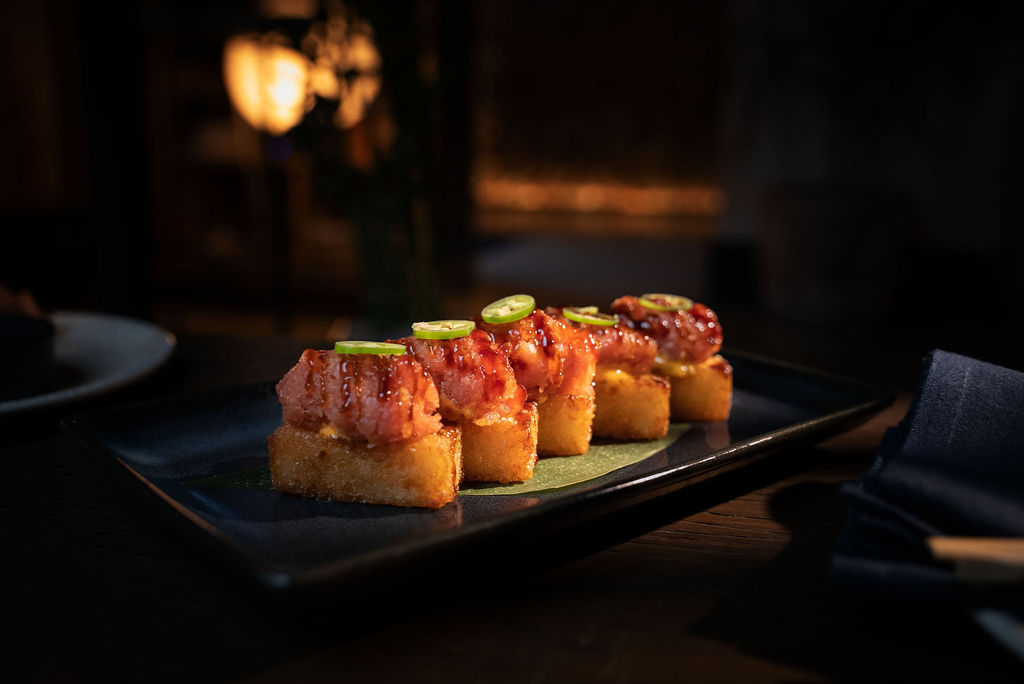
FOOT IN THE DOOR OF A CHANGING CITY
Dung “Junior” Vo, Noko, Nashville
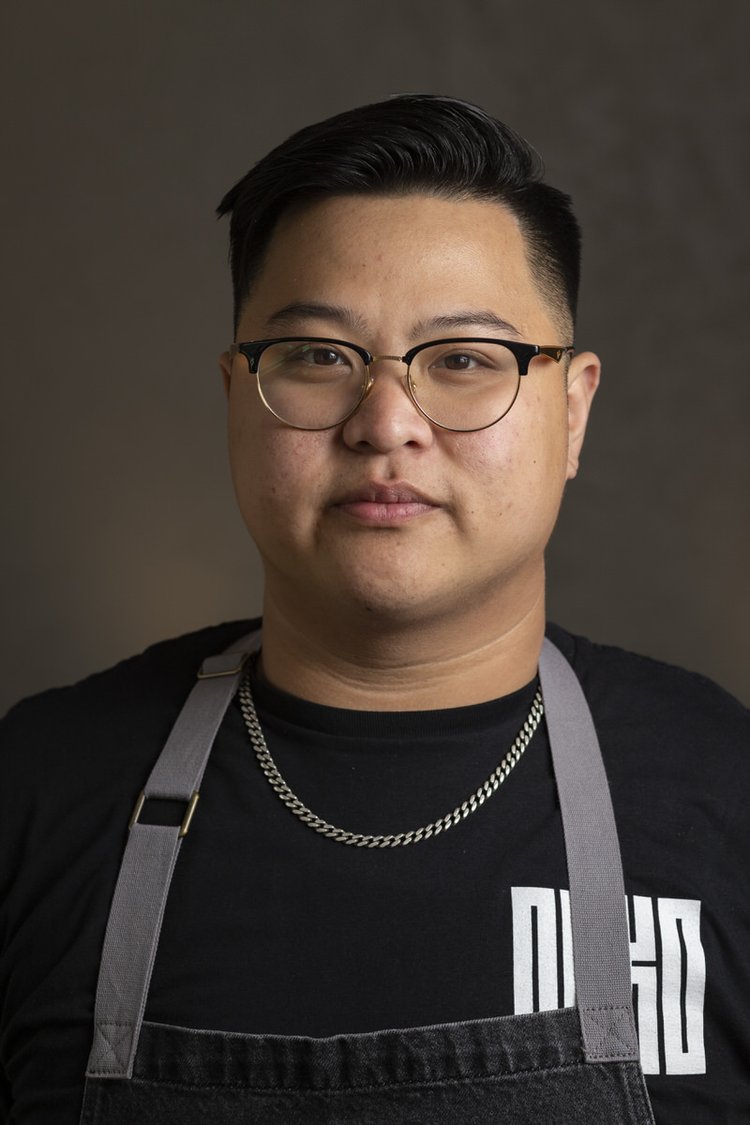
At Noko, the East Nashville brainchild of former Indigo Road Hospitality veterans Jon Murray and Wilson Brannock, you can almost always find chef Dung “Junior” Vo behind the counter slinging top-shelf beef, crisping sticky rice, and charring shishito peppers in and out of a huge wood-fired oven at breakneck speed. Born on the coast of Vietnam in Nha Trang, Vo moved to Atlanta when he was 12 years old, where he and his brother were raised by their single father. He started on the Indigo Road Hospitality team as a sushi chef while attending culinary school in Atlanta, and moved on to become executive chef at O-Ku in Charleston before Murray and Wilson brought him to Nashville as a partner. Vo’s sushi experience is reflected in the menu’s expertly sliced salmon carpaccio and delicate hamachi crudo bright with ponzu.
“Coming to Nashville, there are more voids [in Asian food] compared to a bigger city like Atlanta,” says Vo. “But the type of food I’m making is affordable and approachable to all cultures. Once you get the people in, I can understand their palate and slowly expand.” He’s also excited to see more people come into Noko who are familiar with Japanese and Korean ingredients, and who are open to exploration.
“When I go to a French restaurant, honestly I don’t understand half the names on the menu. So at Noko I’m quite surprised; the guests are quite savvy about these ingredients,” he adds.
Part of his optimism stems from the friendliness that Nashvillians are known for; despite a rapidly growing population, there’s still enough of a small-town vibe for people to respect casual relationships. Once they like the restaurant, diners will order unfamiliar menu items based on recommendation alone. “Nashville is like that,” says Vo. “People support each other very well; it’s very local.”
“If you just go look at a menu in Nashville at the moment, every single menu has something Asian influenced, from steakhouses to Italian.” —Chef Dung “Junior” Vo, Noko
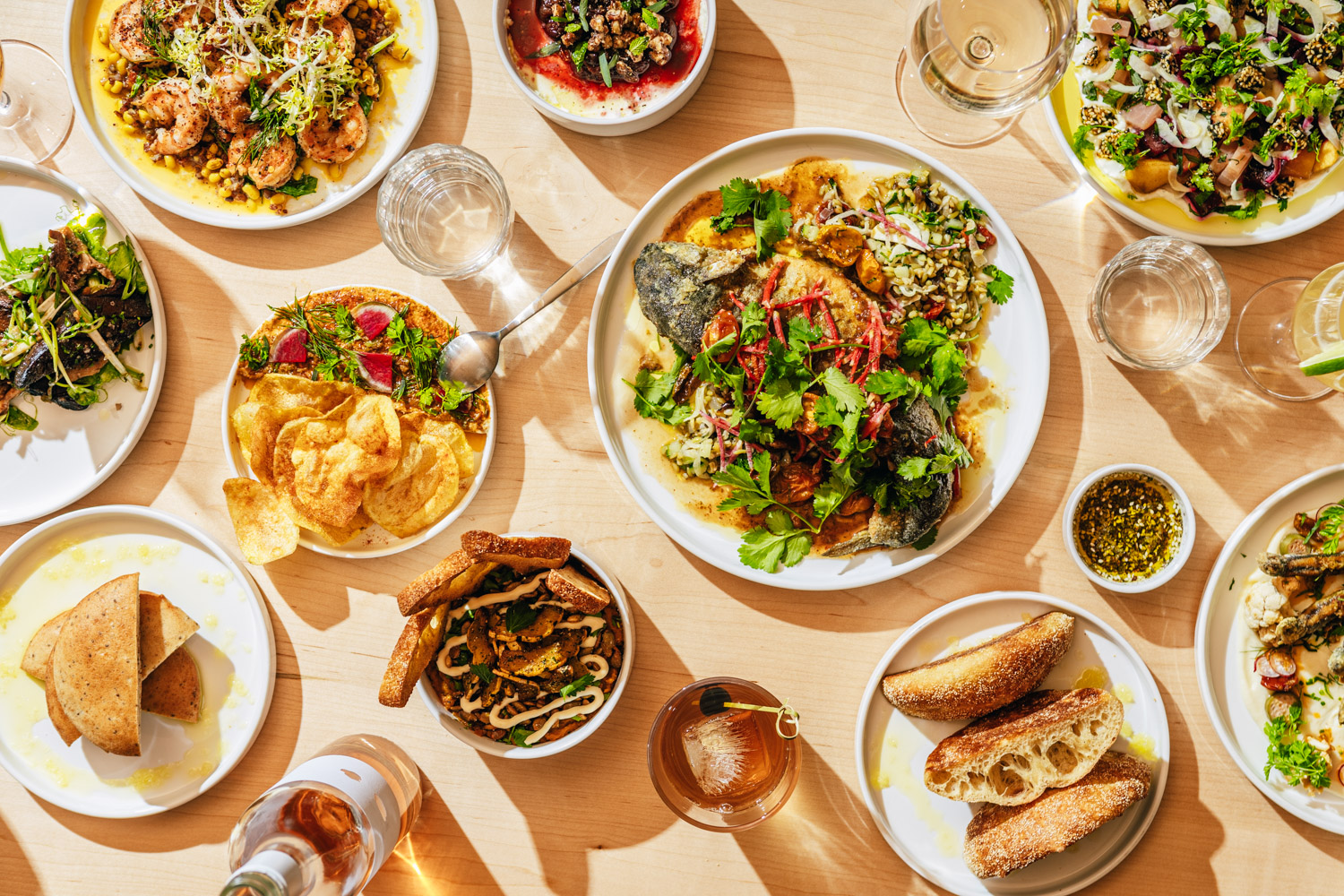
PUNK ROCK INNOVATION THROUGH DOWNTOWN DEVELOPMENT
Cheetie Kumar, Ajja, Raleigh, NC

Over two decades, musician-cum-self-taught-chef Cheetie Kumar and her husband, Paul Siler, have built a punk-rock legacy in Raleigh—both onstage and in the kitchen. The guitarist of The Cherry Valence and Birds of Avalon moved to the Bronx from Chandigarh, India, when she was 8 and spent a decade after college touring across the US and Europe before deciding to put roots down in Raleigh in 1999 by opening the legendary King’s music venue in a downtown warehouse building. Garland, her flagship restaurant, was opened on the warehouse’s middle floor in 2013 to much acclaim and received its fourth James Beard nomination months before closing in 2021.
“I was punk rock about the food,” Kumar says with a laugh. “But my rent wasn’t punk rock.”
Her latest restaurant, Ajja, draws inspiration from the intersectionality of Middle Eastern, Mediterranean, and Southwest Asian cuisines. At just 1,800 square feet, the space, like the menu, is smaller; she compares Garland to a prog rock band “where every song was like 7 minutes long” and Ajja to the remix. Amidst dishes like chicken kabab, eggplant dolma, and a plethora of pickles, a throughline to Southwest Asian ingredients appears, such as the dried fenugreek, cumin, tamarind, and coriander that flavor the tamarind sauce layered onto a Carolina trout dish, for example.
“I was so excited to find something similar in a Palestinian cookbook; it gave me the chills. You’d think it’d be an Indian recipe, but it’s from the Middle East,” she notes.
Unlike the initial reception for Garland, which Kumar describes as “confused” because they were ostensibly an Indian restaurant but served a diverse array of dishes, Ajja opened to a much more receptive and educated Raleigh audience.
“In a place like Raleigh 25 years ago, if you wanted to get a martini you’d have to go to a hotel bar,” Kumar says. “Today I think people are thirsty for knowledge and fascinated by different flavors. People want to be excited about what they eat. Restaurants are becoming more a part of communities and neighborhoods, and independent restaurants have just grown so much over the last two decades.”
Kumar also feels the shift in younger chefs chasing what is authentic to them and branching out beyond monolithic identifiers.
“I think the chefs that are coming up now, they’re telling the story of their heritage. It’s not that they’re just making the food of their country; they’re choosing to be a chef and putting their identity on a plate,” she says. “It’s an amalgamation of where they’ve lived, and they’re expressing it through the pantry of their grandparents.”
“People want to be excited about what they eat. Restaurants are becoming more a part of communities and neighborhoods, and independent restaurants have just grown so much over the last two decades.” —Chef Cheetie Kumar, Ajja
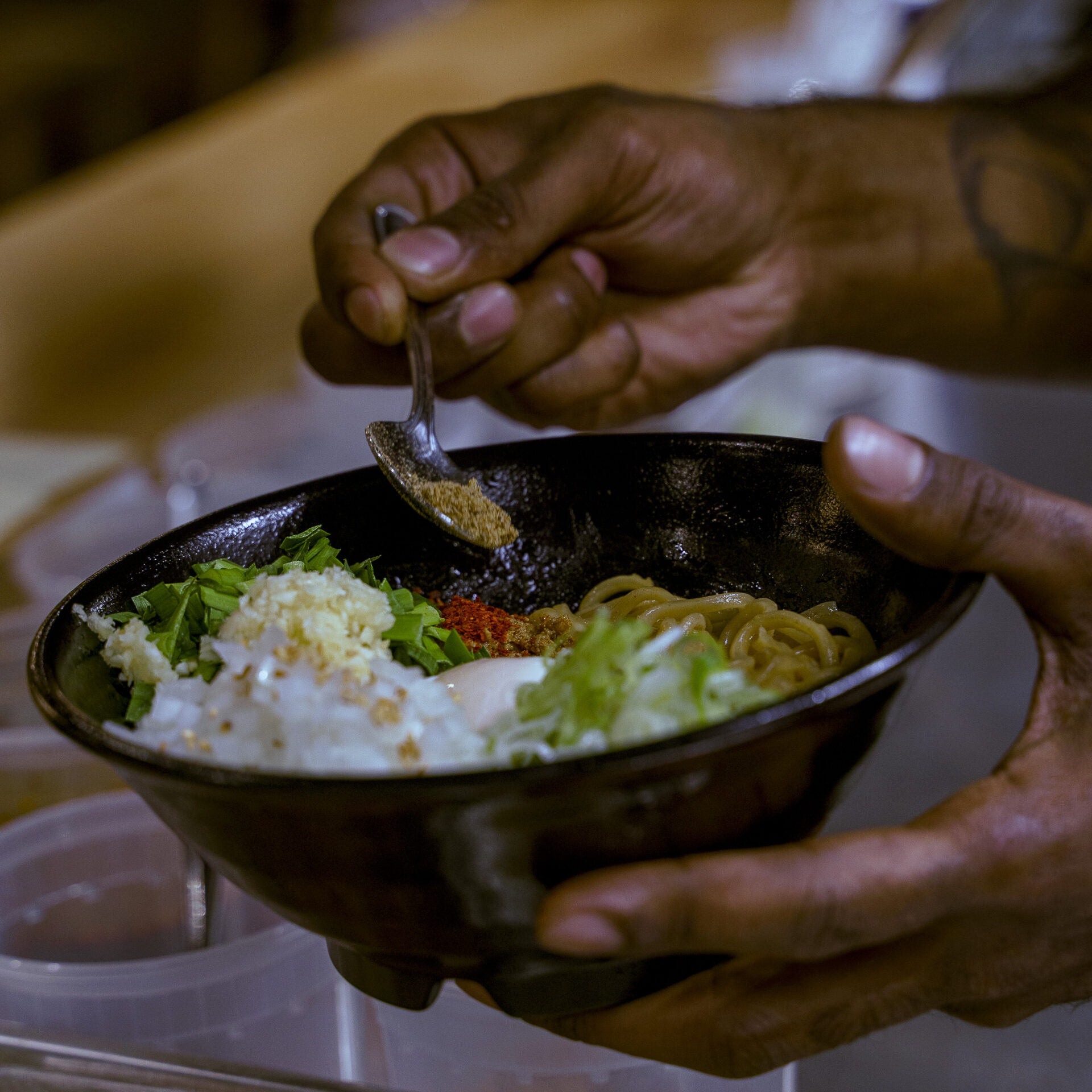
TRANSPORTING PEOPLE TO A SPECIFIC EXPERIENCE
Ted Nakato and Vince Tien, Menya Daruma, Charlotte, North Carolina
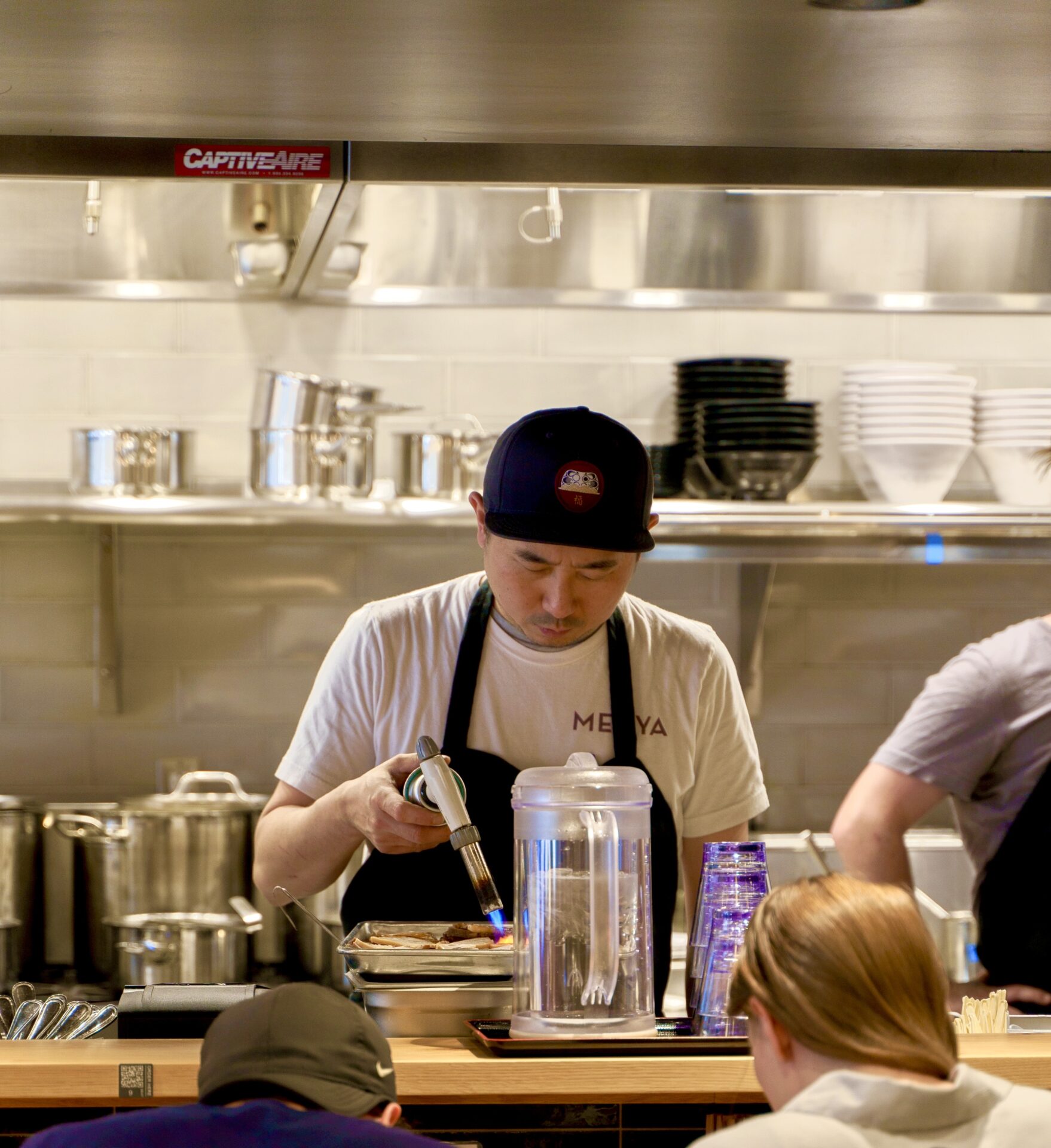
Step into second-generation restaurant owner Ted Nakato’s counter-service noodle bar, Menya Daruma, and it’s as close to Japan as you can get in downtown Charlotte. Line cooks busy themselves behind the counter, thrusting each batch of handmade noodles into nuanced soup stocks and then in front of customers; soy sauces and salts imported from Japan add a special umami to complex broths; and the sounds of satisfied slurping punctuate conversation.
“With Menya Daruma, we wanted to give people an impression of what it would be like if you traveled to Asia,” says Nakato, a native of Charlotte.
Nakato met partner and executive chef Vince Tien while managing a Japanese farm-to-table restaurant in Portland, Oregon. Once they began planning this concept, Tien taught himself how to make noodles during the pandemic. Currently they make two types: a thinner egg-based ramen noodle for soup and a dry soba. (A second dry soba is in the works.) While they tried to keep the essentials as true to Japanese tradition as possible, Tien added egg white powder to the ramen noodle so it wouldn’t get soggy as fast, and tapioca powder in the soba noodle to give it more texture.
“Here people eat a bit slower, compared to Asia where people will slurp the noodles up in five minutes,” says Tien.
Nakato and Tien believe the success of Menya Daruma, and specialty shops like it, is in large part because social media has opened American eyes to unique dining experiences around the world. This has sparked curiosity about what a real Japanese noodle bar would be like, versus simply an American curation.
“When technology came in and people had access to all this information, it opened the door to all types of [international] food,” says Tien. “I can’t travel 5,000 miles to Japan, but hey, I heard this noodle bar has some pretty traditional Japanese flavors.”
“I can’t travel 5,000 miles to Japan, but hey, I heard this noodle bar has some pretty traditional Japanese flavors.” —Chef Vince Tien, Menya Daruma
PLANTING SEEDS FOR THE NEW SOUTH
Chef Hao Gong Luvi, New Orleans, LA
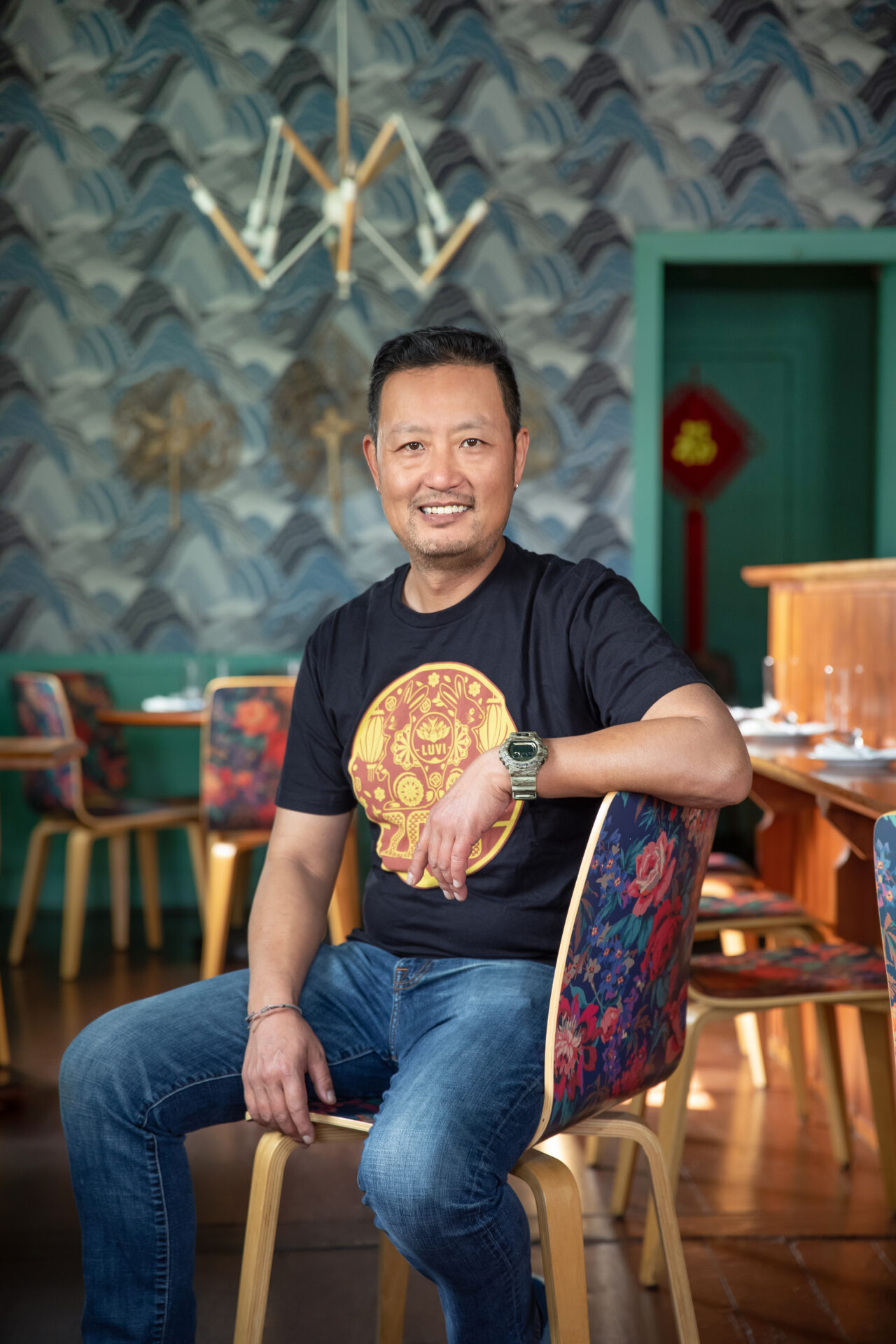
Located on Tchoupitoulas Street in a trendy uptown neighborhood of New Orleans, intimate eatery Luvi serves traditional Chinese home cooking and artful sashimi in the distillation of a chef’s life come full circle. Born and raised in Shanghai, 49-year-old chef-owner Hao Gong underwent years of rigorous training in Chinese banquet cooking as a curious teen in China before moving to San Francisco at age 15 to train as a Japanese sushi chef. He spent his twenties making sushi in California before moving to Louisiana in 1993, where he met his wife. Katrina forced them to return to California just as they were starting their family, but they returned after three years in LA. In 2018, Gong finally opened his own restaurant celebrating the home cooking of his roots.
“Do I want to be a Michelin-star lookalike where everything is fancy, people are always hungry, portions don’t fill you up? I was like, let’s do it the Asian way, where we have a lot of dishes on the table and share,” says the two-time James Beard Award semifinalist.
Named after his two children, Lulu and Violet, and decorated by his wife, Jennifer, Luvi features a lauded raw bar with creative sashimi platters like salmon with sesame-crusted banana, as well as Chinese comfort foods like Malla Holla, a milder Shanghainese take on Sichuan spicy beef shank. Chinese banquet food, which requires high-flame wok cooking techniques, is typically not reflective of traditional home cooking, which is why Gong does the opposite at Luvi—elevating the aesthetics but using home-cooking methods and flavors that his customers could replicate on an electric stove at home.
“I’m not shy about sharing recipes. I try to create a culture of people who love cooking and eating,” he says. “Like me, the customers have to put the love and passion into it themselves.”
Gong is now busy putting his energy into the next generation of New Orleans chefs, whose post-COVID-19 innovations—similar to post-Katrina rebuilding—are redefining the city’s kaleidoscopic culinary diversity.
“During COVID-19, people educated themselves a lot more about food—and at the same time these young [chefs] are pushing food to new levels. That’s great for the market. I love seeing new concepts succeed.”
“During COVID-19, people had a lot of time to study food at home. They’re much more educated about food now.” —Chef Hao Gong, Luvi
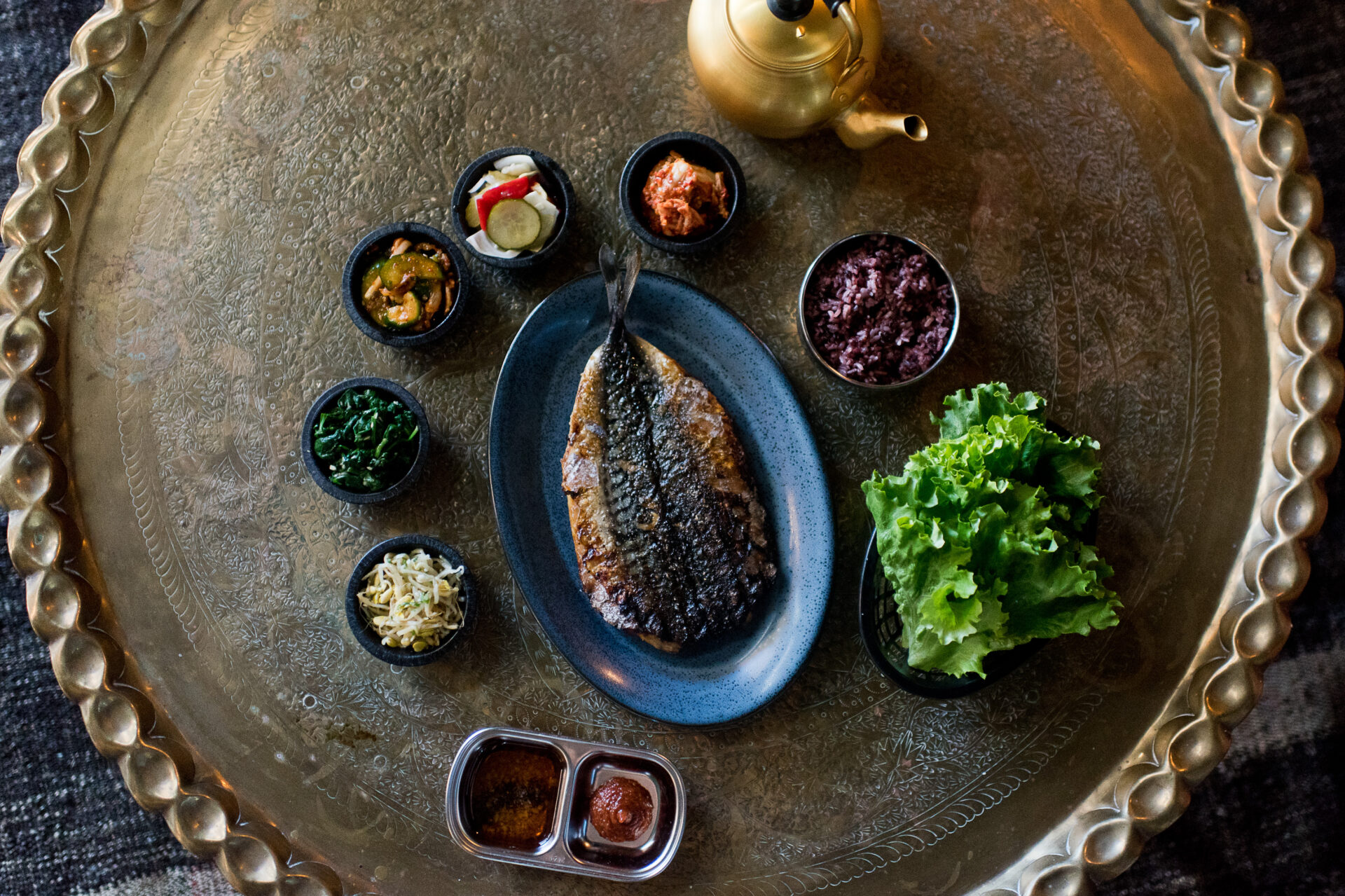
CREATING FOOD AUTHENTIC TO THEIR EXPERIENCE
Lynn Miller and Mike Diaz, Oseyo, Austin
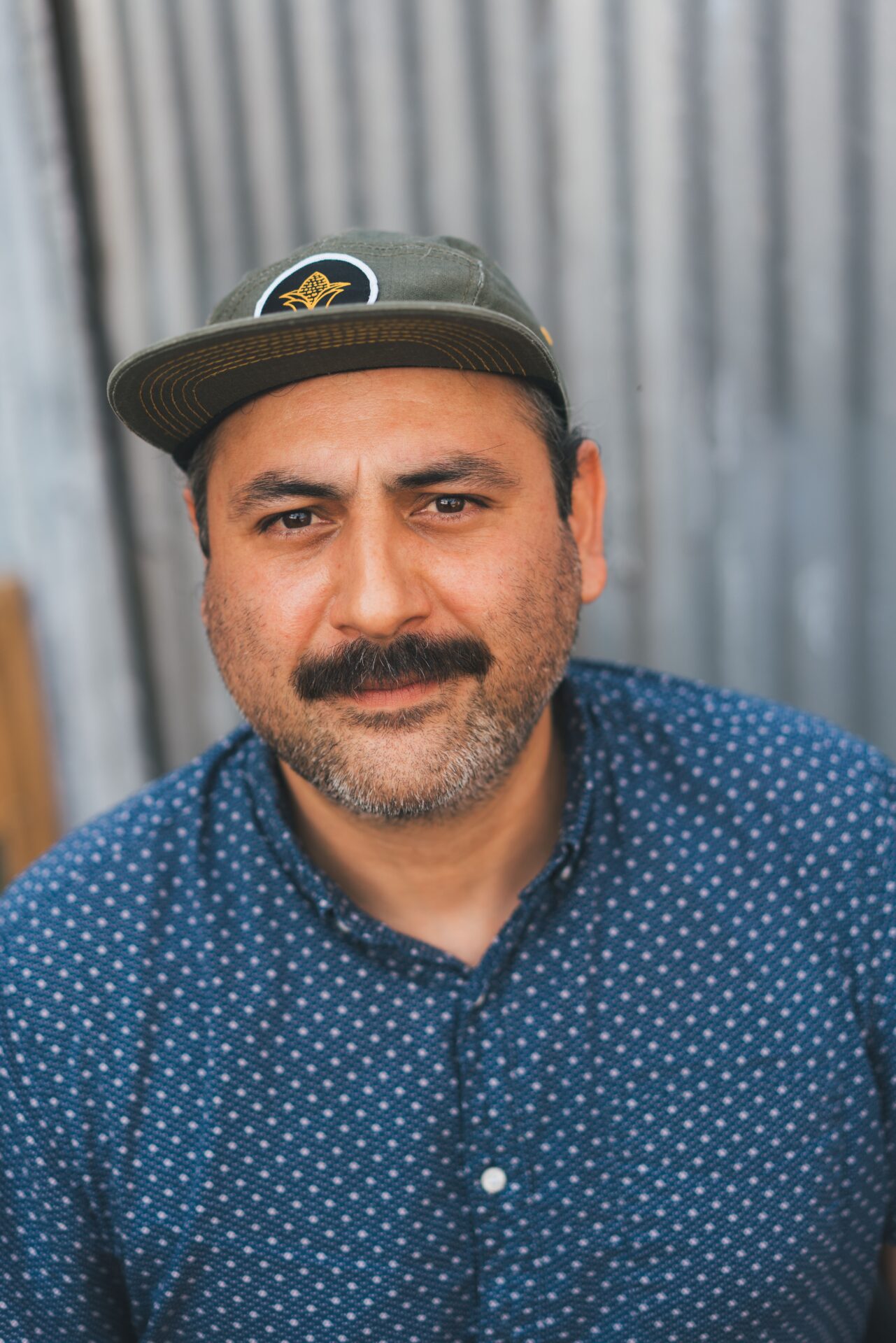
Of all the East Asian cuisines, Korean food is perhaps the least understood, especially outside coastal US metropolises. Before Dallas-born Korean American Lynn Miller opened Oseyo in 2019, Austin’s Korean food scene consisted of a few mom-and-pop eateries and K-BBQ joints on the fringes of town—nothing like the upscale eatery combining homestyle food and intimate wood-fired grilling that Miller and executive chef Mike Diaz were doing in East Austin.
It was the right time and place—thousands of Californians were migrating into the gleaming new tech hub, drawn by blue-dot politics and (relatively) affordable living, which the pandemic only accelerated.
“Before (the pandemic) the majority of people here on Friday nights had never had Korean food,” says Miller.
Miller came back to Texas after a decade in New York’s restaurant industry to help take care of her ailing father, and Oseyo carries on the spirit of her mother’s traditional recipes, like belly-warming Korean jigaes (stews) and juicy mandu (dumplings) shaped like a sailor’s hat. Miller’s mother taught Diaz Korean cooking techniques, such as how to make banchans and marinades, and how to delicately layer peppers between sheets of cabbage to make kimchi. Diaz uses these techniques in his own way to create a specific hyphenated cuisine: their fried chicken uses gochujang but is breaded the Southern way with buttermilk; they serve grilled octopus Korean-style but like a Mexican coctel with a kimchi aïoli; and the post-oak grill gives their braised proteins and mushrooms a uniquely Korean-by-way-of-Texas flavor.
They’ve naturally gotten some pushback about the “authenticity” of their food, which doesn’t use MSG and is more subdued than the typically intense Korean palate, but Diaz and Miller note that being authentic to individual immigrant experiences and replicating Korean cuisine from the motherland are two different concepts.
“We’re not trying to represent an entire cuisine; we’re just trying to organically do what Oseyo is now. That’s kind of the whole immigrant experience,” says Diaz.
“We’re not trying to represent an entire cuisine; we’re just trying to organically do what Oseyo is now. That’s kind of the whole immigrant experience.” —Chef Mike Diaz, Oseyo
keep reading
Radar
10 Recently Opened (and Soon-to-Open) Restaurants Around the South
Check out these 10 recently opened and soon-to-open restaurants from Miami to Louisville, with Lebanese mezze to rustic Italian food and Spanish vermouth bars.
Dining Out
12 New Restaurants in Louisiana
12 new and exciting restaurants in Louisiana bring even more thriving personality to the Pelican State. Come explore the dynamic flavors.
Radar
8 New Restaurants On Our Radar
TLP shares eight new restaurants that have recently opened or are set to open soon in the South that we can’t wait to try this autumn.
share
trending content
-
The Wandering Chef
by Emily Havener -
Sip, Savor, & Shop in Downtown Clayton, North Carolina
-
7 Noteworthy Mississippi Restaurants | Listen
by TLP Editors -
See What’s Brewing in Myrtle Beach
-
Exploring Chapel Hill’s Culinary Treasures
by TLP's Partners
More From From the Magazine
-
Cook the Book: Jubilee
-
Cook the Book: Bagels, Schmears, and a Nice Piece of Fish
-
Cook the Book: Channeling Alex Snodgrass
-
Cook the Book: Skillet Love
-
Cook the Book: That Sounds So Good





